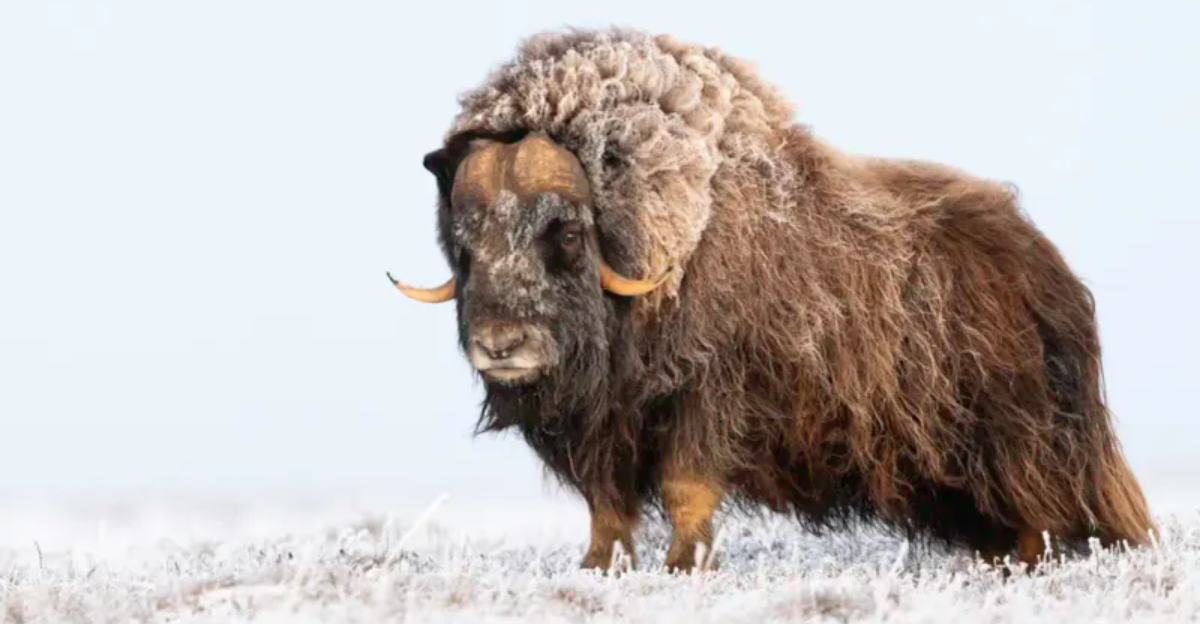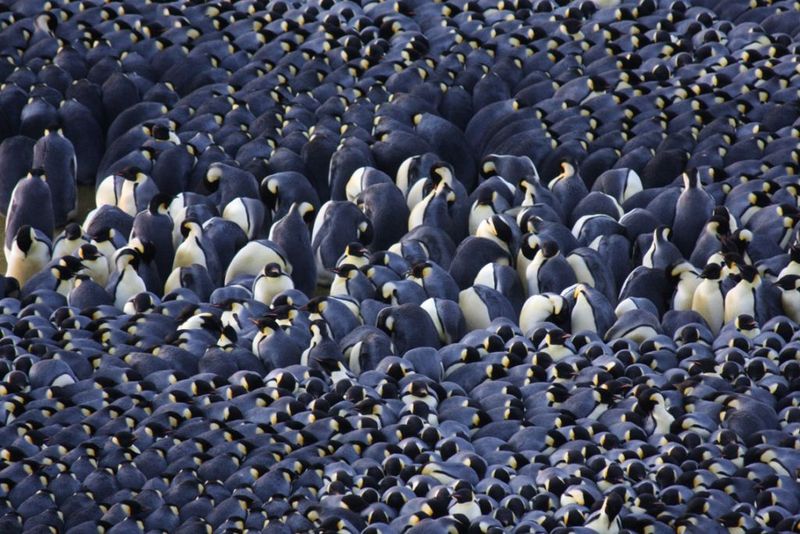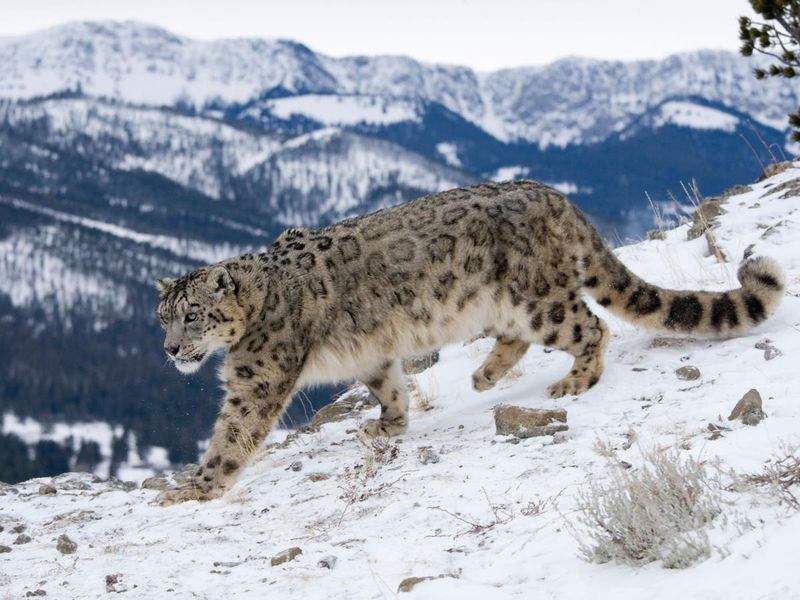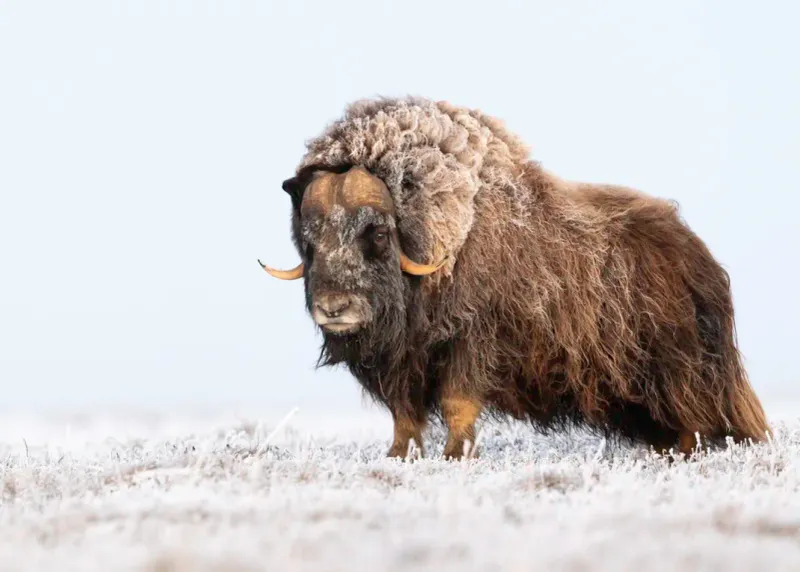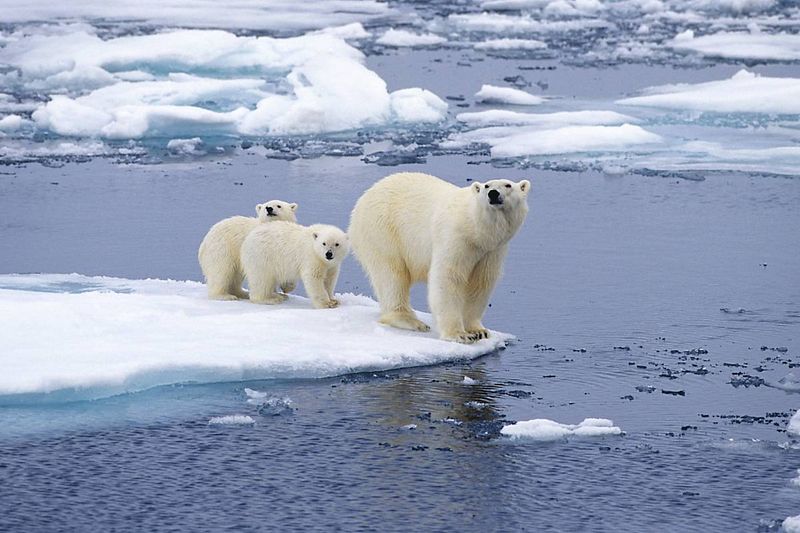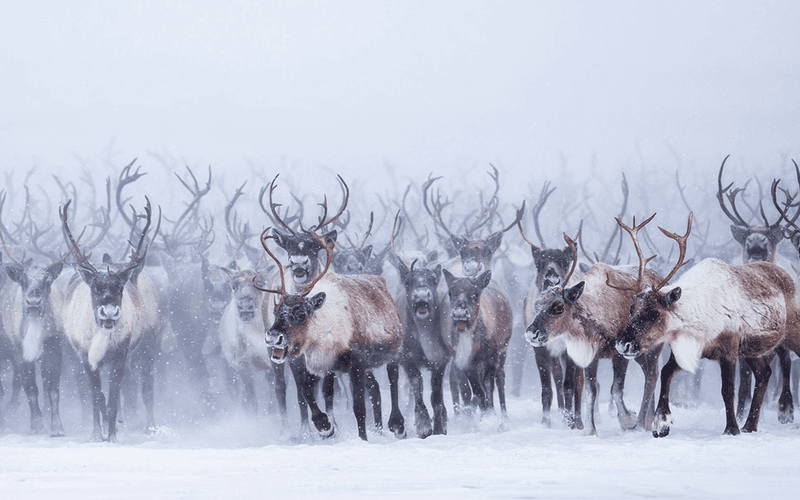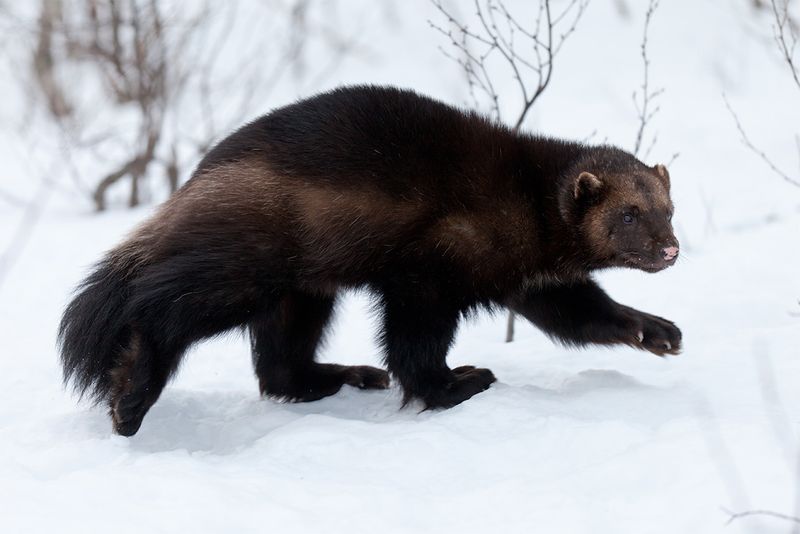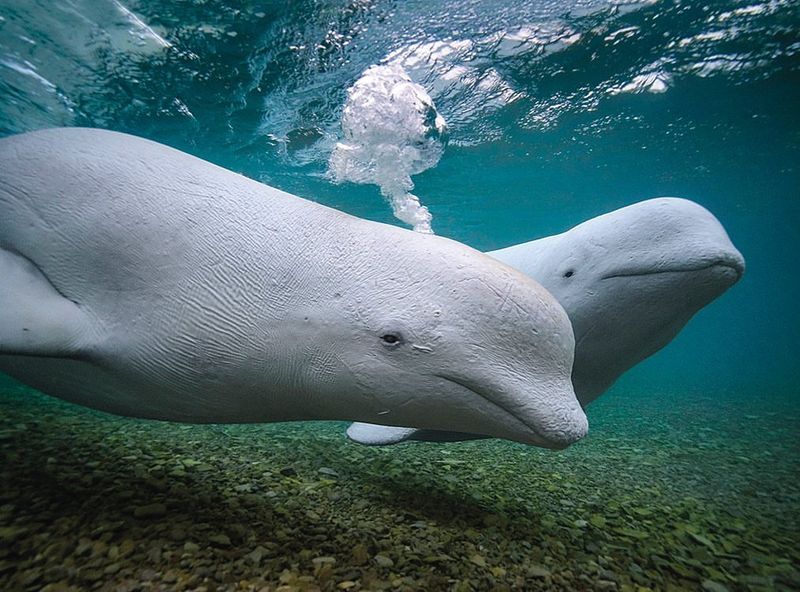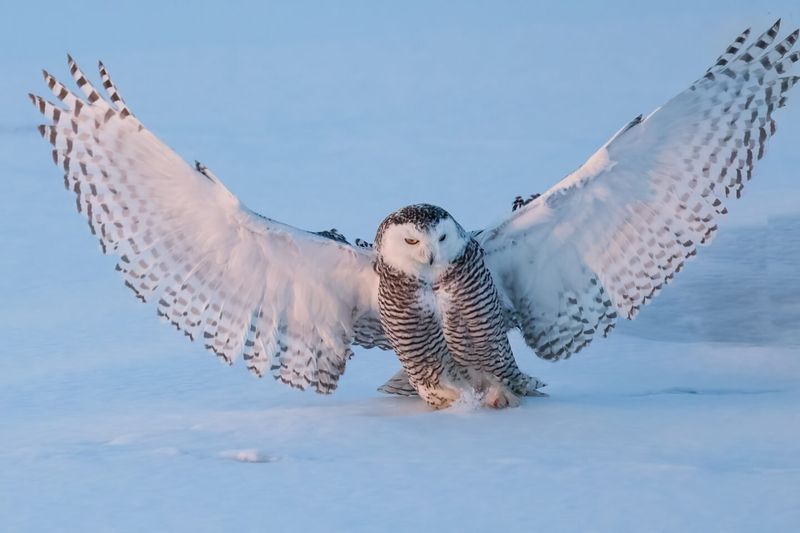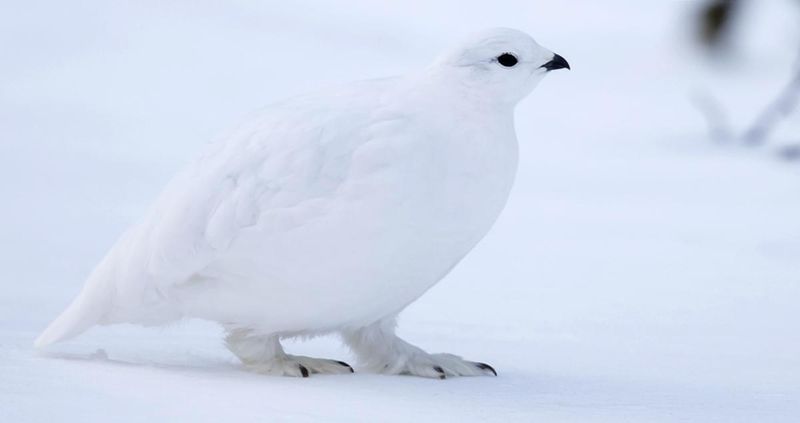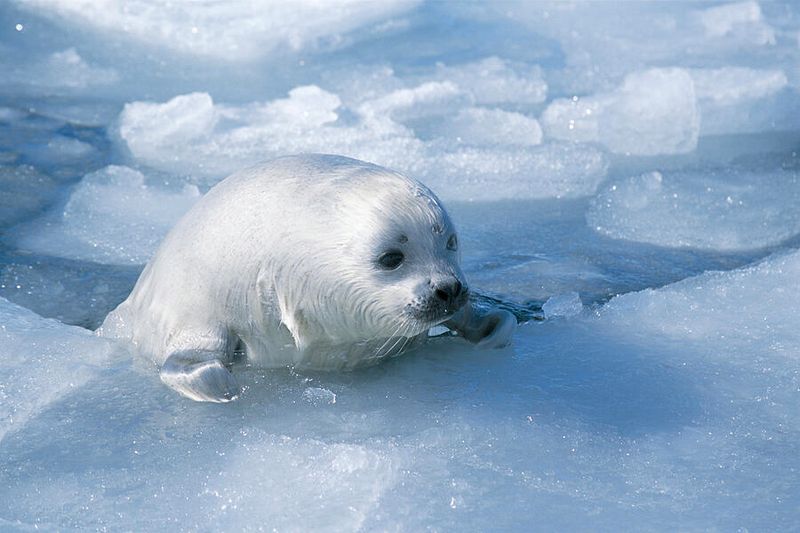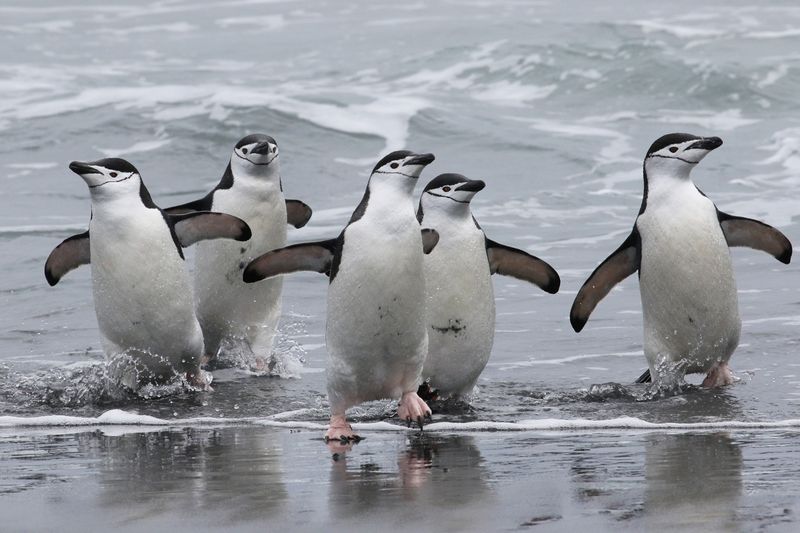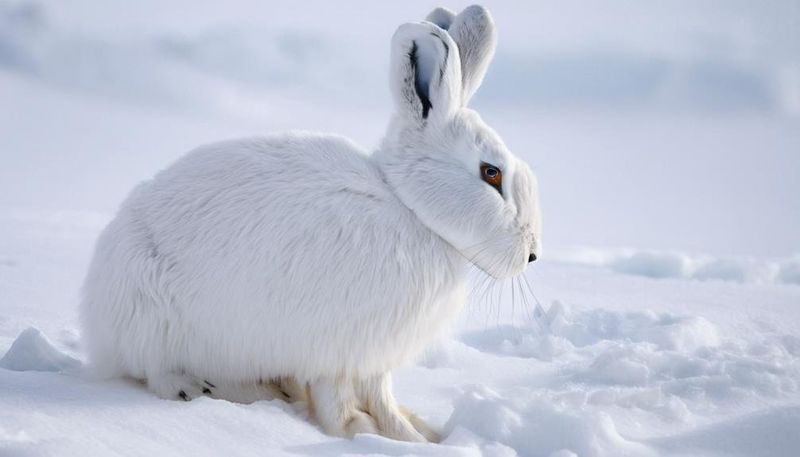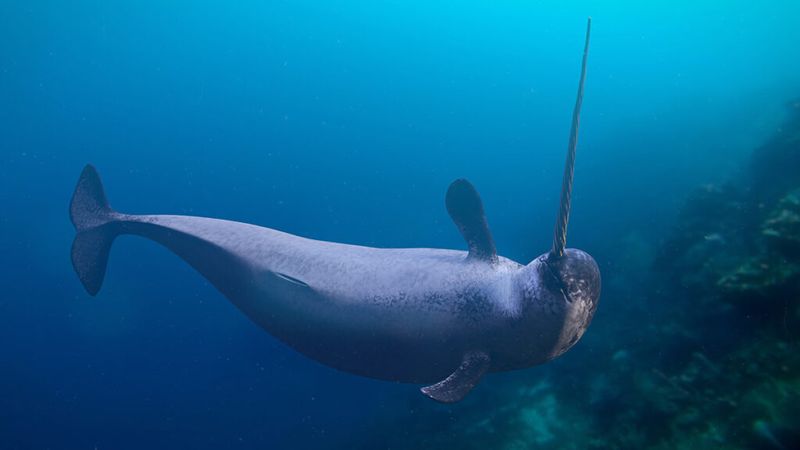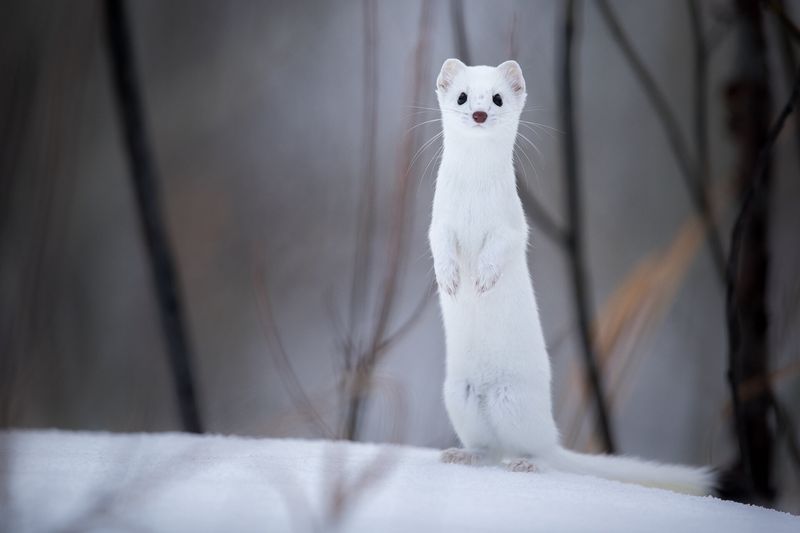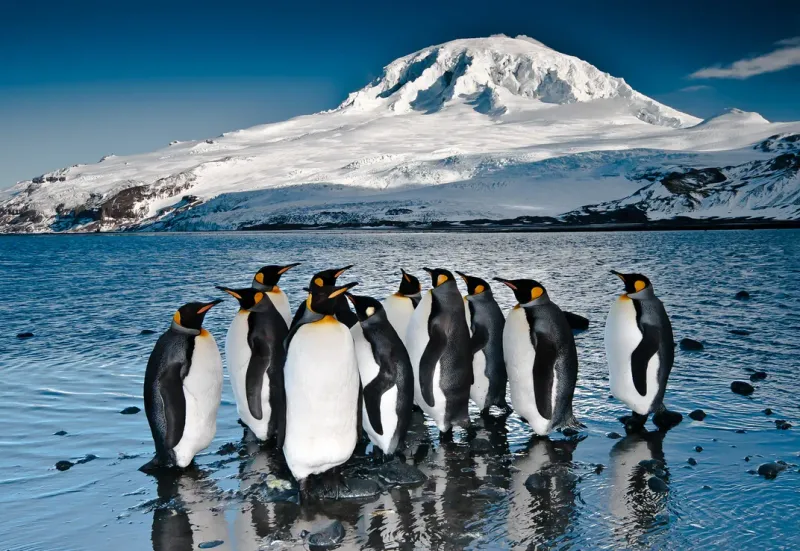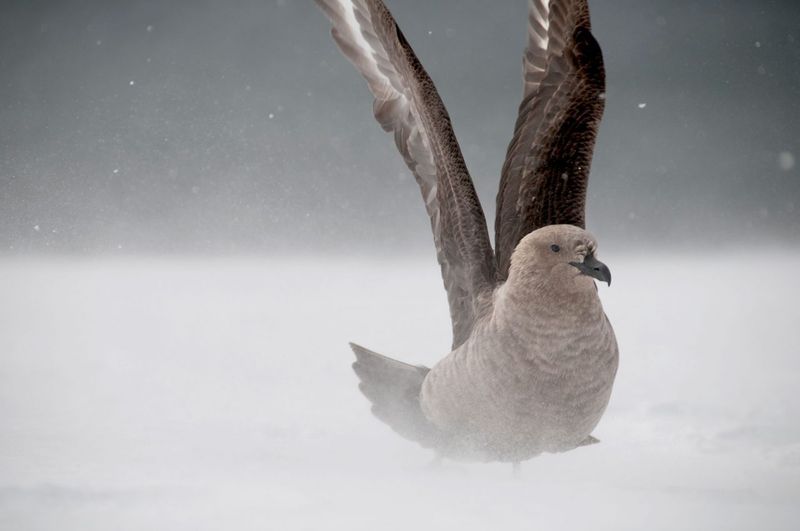Life in the extreme cold isn’t for the faint of heart, but some animals have evolved incredible adaptations to survive—and even thrive—in frigid environments. From polar tundras to icy oceans, these 19 animals are true cold-weather champions.
Arctic Fox
Meet the Arctic Fox, a master of survival in icy realms. With its thick white coat, it blends seamlessly into snow-covered landscapes. This fluffy mammal thrives in temperatures plummeting to -58°F (-50°C), thanks to its compact body that conserves heat. Its fur changes color with the seasons, offering an edge in camouflage.
In winter, it hunts for small prey like rodents, using its keen sense of hearing. During harsh times, it isn’t too picky—leftovers from polar bears become a feast. This resilient creature is a testament to nature’s adaptability.
Emperor Penguin
Marvel at the Emperor Penguin—Antarctica’s majestic resident, enduring brutal winters with grace. The largest of all penguin species, these birds huddle in massive groups, sharing warmth in their icy homeland. Their sleek black and white feathers act as a formidable shield against the cold.
Emperor Penguins brave the frigid waters to hunt for fish, diving deep beneath the ice. Their journey to breeding grounds is a testament to familial dedication, where males incubate eggs on their feet through winter’s chill. True symbols of perseverance, they bring life to one of Earth’s coldest places.
Snow Leopard
The elusive Snow Leopard reigns over Central Asia’s rugged mountains. With thick, patterned fur, it blends into the rocky, snow-dappled landscape. Its long tail, wrapped like a scarf, provides warmth and balance as it stealthily prowls its domain.
Adapted to high altitudes, its powerful lungs extract oxygen from thin air, ensuring it thrives where few others can. Despite its solitary nature, the Snow Leopard’s soft, haunting calls echo through the valleys, a mysterious reminder of its presence. It’s a symbol of wild beauty, surviving and thriving in the world’s rooftop.
Musk Ox
In the stark Arctic, the Musk Ox stands resolute, a woolly titan against the biting cold. Its dense undercoat, known as qiviut, insulates against temperatures below -40°F and biting Arctic winds. Herds of these giants move slowly across the tundra, their presence a testament to survival.
With horns curved like ancient shields, they fend off predators with unwavering courage. The Musk Ox forages tough grasses and shrubs, showcasing adaptability in a barren landscape. Their existence is a testament to resilience, thriving where few others dare to tread, embodying the spirit of endurance.
Polar Bear
The Polar Bear is the Arctic’s undisputed monarch, a massive predator adapted for the ice. Beneath its white fur lies black skin, absorbing precious heat. A thick layer of fat ensures survival in frigid temperatures, while powerful limbs navigate vast expanses of ice.
Its incredible sense of smell detects seals beneath the ice, showcasing exceptional hunting prowess. These solitary bears roam the Arctic, embodying strength and majesty. In a world of ice and snow, the Polar Bear is a symbol of survival, its presence a reminder of nature’s formidable power.
Reindeer (Caribou)
Reindeer, or Caribou, are the Arctic’s nomads, moving with the rhythm of the seasons. Their thick fur insulates against the cold, while specialized noses warm the air before it reaches their lungs. These resilient travelers migrate vast distances, guided by instinct and necessity.
Hooves adapted for snow and ice make them agile trekkers, while their antlers, both majestic and practical, fend off predators. Reindeer are integral to indigenous cultures, providing sustenance and companionship. As they cross tundras, their presence is a living legacy of adaptation and endurance.
Wolverine
In the frozen forests and tundras, the Wolverine roams—a fierce, solitary hunter. Dark fur, dense and warm, guards against the biting cold as it traverses snow-covered terrains. It’s a scavenger’s life, finding sustenance in leftovers and opportunistic kills.
With sharp claws and powerful jaws, it takes on prey much larger than itself, embodying nature’s tenacity. The Wolverine’s reputation as a relentless fighter is well-earned, its spirit unyielding in the harshest climates. A symbol of survival, it thrives where the weak falter, a living testament to nature’s resilience.
Beluga Whale
In the icy Arctic waters, the Beluga Whale sings its ethereal songs. With a thick layer of blubber for warmth, it navigates the freezing ocean depths. Its white body, a spectral figure against the dark sea, is a marvel of adaptation.
Belugas communicate with complex vocalizations, their social bonds as strong as the ice they swim beneath. They twist and turn with a grace that belies their size, thriving in a world of ice and water. The Beluga Whale is a testament to nature’s ingenuity, perfectly adapted to its frozen realm.
Snowy Owl
The Snowy Owl, with its piercing gaze and ghostly plumage, commands attention in the Arctic expanse. Its dense feathers guard against cold, even covering its feet. Keen eyesight scans the snowy plains, seeking rodents and birds in the dim Arctic light.
These owls are masters of the silent hunt, swooping with precision and grace. The Snowy Owl’s presence is a reminder of quiet strength, its resilience a beacon in a world of white. Its call, haunting and beautiful, resonates through the wintry silence, a symbol of wild majesty and adaptation.
Ptarmigan
The Ptarmigan, a master of disguise, blends seamlessly with its environment. In winter, its plumage turns white, a perfect match for the snow-covered landscape. Even its feet grow feathers, providing warmth and traction on ice.
This bird’s life is one of constant adaptation. As seasons shift, so does its color, a change as natural as the cycles of the earth. The Ptarmigan’s survival hinges on its ability to remain unseen, a strategy honed over millennia. In the harsh cold, it is a quiet testament to the power of transformation and resilience.
Harp Seal
Born into a world of ice and snow, the Harp Seal pup is a vision of innocence. Its fluffy white coat blends with its surroundings, providing both warmth and camouflage. Adult seals rely on a thick layer of blubber to brave icy waters.
Harp Seals are playful swimmers, navigating the Arctic seas with agility and grace. Their large soulful eyes are windows to a harsh yet wondrous world. These seals are nature’s adventurers, thriving at the edge of the world, where ice meets sea and life defies the odds.
Antarctic Toothfish
Meet the Antarctic Toothfish, a marvel of evolutionary survival. In the frigid waters of the Southern Ocean, it produces antifreeze proteins, preventing ice crystals from forming in its blood. This unique adaptation allows life to flourish where others freeze.
Streamlined and efficient, the Toothfish navigates the depths with ease. Its role in the ecosystem is vital, a key predator in the Antarctic food web. As icebergs drift above, the Toothfish thrives below, a testament to life’s tenacity and the intricate balance of marine life.
Lemming
In a world blanketed by snow, the Lemming lives a life of quiet perseverance. Beneath the icy crust, they carve out warm refuges, where the ground is just hospitable enough for survival. These tiny creatures forage for grasses and roots, their lives a delicate balance of survival.
Lemmings are masters of the unseen, their activity hidden beneath winter’s blanket. Despite their size, they play a crucial role in the Arctic food chain, their numbers ebbing and flowing with the seasons. In the frozen north, they are a symbol of quiet endurance.
Chinstrap Penguin
The Chinstrap Penguin, named for its unique markings, thrives in Antarctica’s icy embrace. These spirited birds nest on treacherous cliffs, their colonies a cacophony of life against the stark white. Agile swimmers, they dive into freezing waters, hunting krill with precision.
Chinstrap Penguins are social creatures, their interactions lively and complex. Amidst the harsh environment, they find warmth in companionship and community. Their resilience and adaptability are remarkable, as they conquer the challenges of their frozen realm, true icons of Antarctic life.
Arctic Hare
With fur as white as the snow it inhabits, the Arctic Hare is a creature of pure adaptability. Stocky and resilient, it weathers the Arctic’s cold with aplomb. Its thick coat minimizes heat loss, and its swift legs make it a master of evasion.
In this land of extremes, the hare finds sustenance in sparse vegetation, its diet a testament to survival. When the wind howls and the snow falls, the Arctic Hare remains unperturbed, a silent testament to nature’s ingenuity. Its presence is a reminder of life’s tenacity in the face of adversity.
Narwhal
The Narwhal, often dubbed the ‘unicorn of the sea,’ is a creature of mystery and elegance. Its long tusk, an elongated tooth, spirals from its head, a symbol of the Arctic’s wonders. These whales live year-round in cold waters, using echolocation to navigate beneath the ice.
Social and communicative, Narwhals travel in pods, their interactions harmonious and complex. They dive to great depths, hunting for fish and squid, their lives a ballet of fluid grace. The Narwhal’s existence is a testament to the beauty and mystery of the ocean’s depths.
Ermine (Stoat)
The Ermine, or Stoat, is a nimble predator of the snowy realms. In winter, its coat turns a brilliant white, a cloak of invisibility against the snow. This transformation is a masterstroke of nature, allowing it to hunt undetected.
With keen senses and agile movements, the Ermine tunnels through snow in pursuit of prey. Its life is one of stealth and precision, every movement calculated for survival. The Ermine is a symbol of adaptability, thriving in a world of frost and silence, where only the most resourceful endure.
King Penguin
The King Penguin, second in size only to the Emperor, is a regal presence on sub-Antarctic islands. With vibrant orange accents on its head, it stands out against rocky shores. Layers of insulating fat and feathers shield it from the cold.
In large colonies, they form tight-knit communities, their calls echoing across the landscape. King Penguins are devoted parents, sharing responsibilities in a harsh environment. Their resilience and grace make them a beloved symbol of the southern seas, thriving in a world where few others dare.
South Polar Skua
The South Polar Skua, an avian warrior of the Antarctic, is known for its fearlessness. Strong wings carry it across the vast icy expanse, and its keen eyes spot opportunities from afar. Breeding on the frozen continent, it is a master of survival.
These birds are uncompromising, scavenging and hunting with equal prowess. Their adaptability is key, thriving in the harshest conditions with confidence. The Skua’s presence is a reminder of nature’s grit and tenacity, an embodiment of life flourishing against the odds in the world’s coldest corners.
